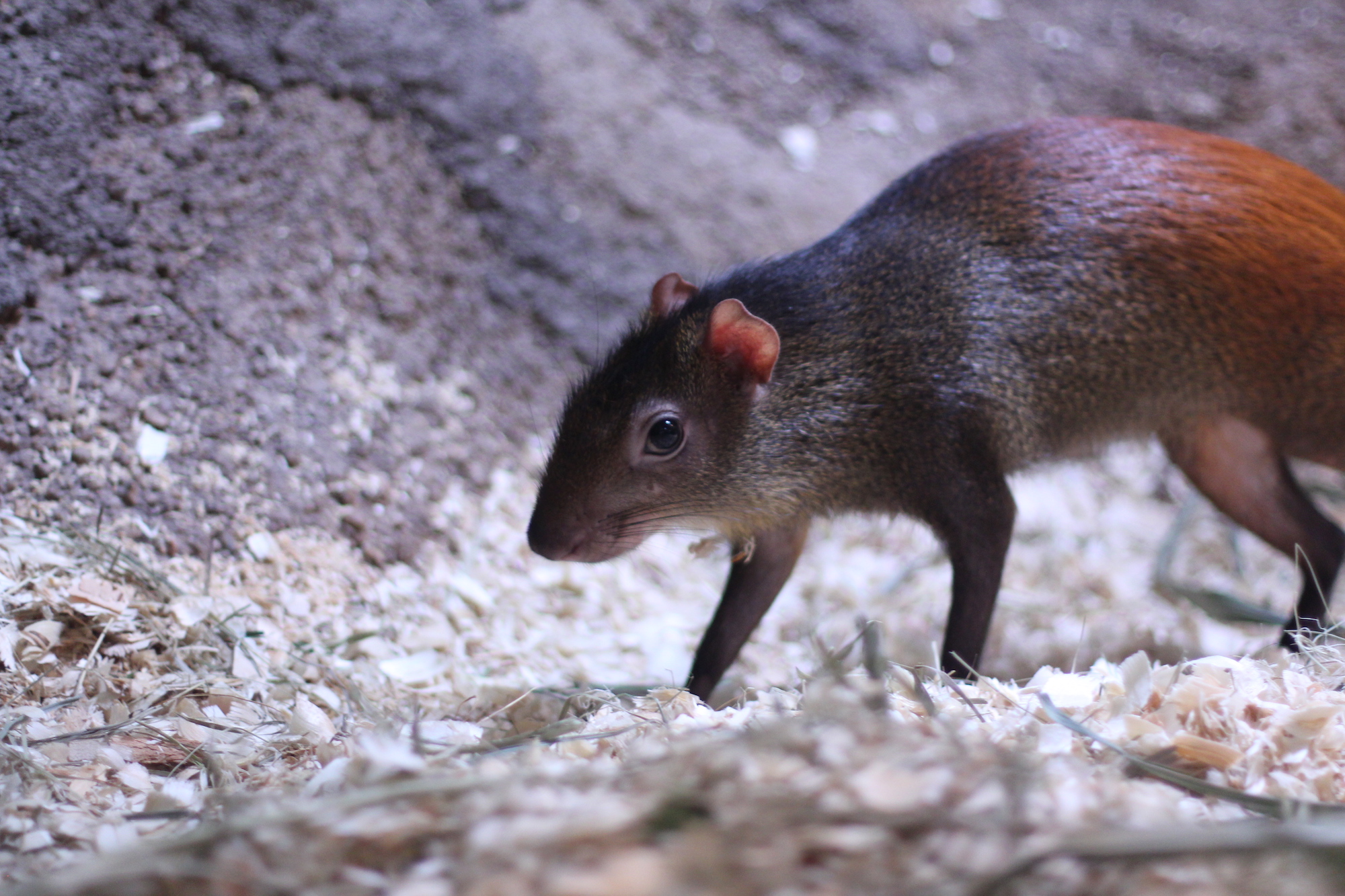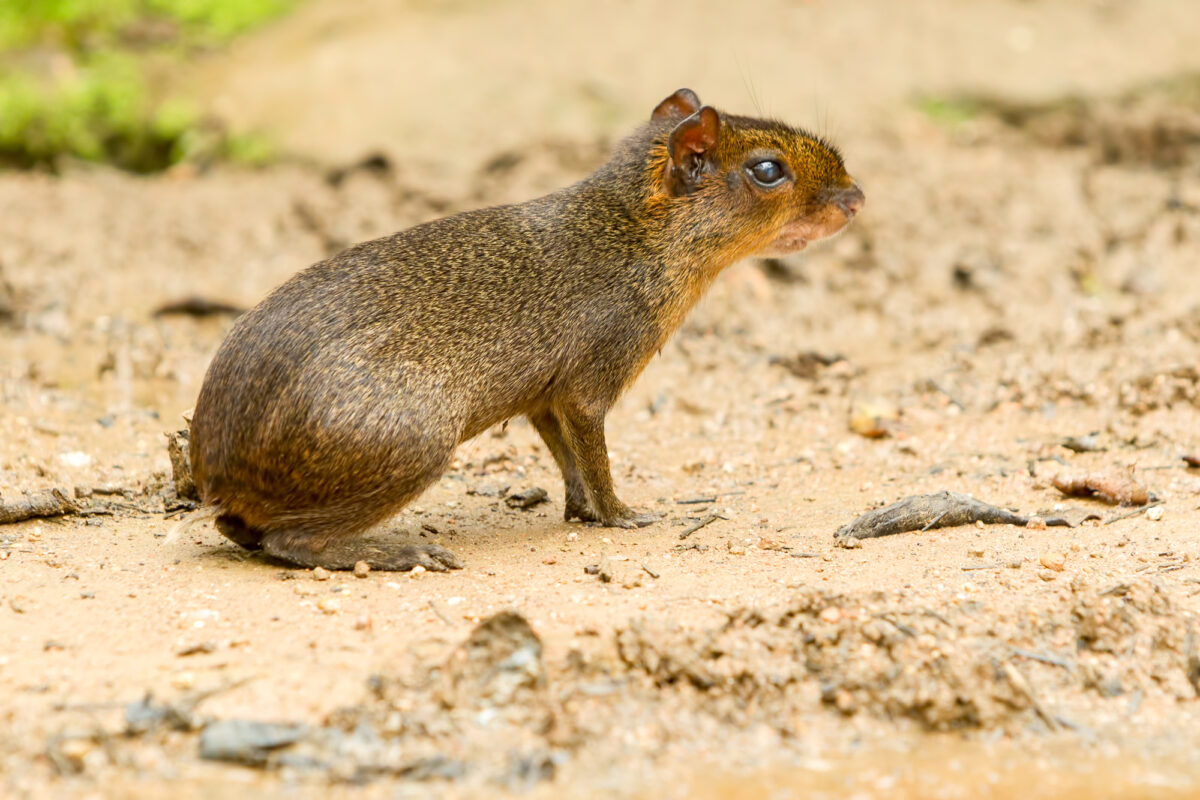Agouti -The Common Rodent Species of Dasyprocta
Agouti: A Fascinating and Misunderstood Rodent of Latin America

The agouti, scientifically known as Dasyprocta, is a common family of ground-dwelling rodents found in different habitats across Latin America. They have reddish-brown fur and long prominent teeth. Although frequently seen throughout the continent, they are often misunderstood and warrant further investigation.
Physical Attributes
A common agouti in Costa Rica’s rainforest is known for its size, which spans from 14 to 17 inches long and weighs between 3 to 6 pounds. Their dark brown fur with light streaks gives them a speckled appearance. They have large almond-shaped eyes on the side of their heads, providing them a wide vision of 270 degrees to avoid predators. Their legs are strong and sturdy, enabling them to escape at a top speed of 35 miles per hour, aided by long curved claws on their feet.
Fur
Agoutis have thick, coarsely textured fur that provides insulation against environmental conditions and protects them against bites from other animals, spiders, or insects. Their fur is well-camouflaged in their natural environment, consisting of guard hairs and softer underfur. They shed their coat twice a year, helping them retain fur strength and sheen.
Diet
Agoutis are mainly herbivores, feeding on fruits, nuts, seeds, and vegetation, but also consume insects and occasionally hunt small animals like lizards, snails, and crabs. Agoutis play a crucial role in plant reproduction as they disperse seeds around their habitat, making them an essential part of the forest ecosystem.
Agouti’s Unique Feeding Habits
Agoutis have a distinctive way of eating. They rapidly seize food using their hands and front claws, then sit upright on their hind legs to consume it.
Agouti Behavior
Agoutis are active during the day and seek shelter in burrows, crevices, or trees at night. They approach food and water sources cautiously and flee immediately if they sense danger.
Agoutis are social animals that form groups consisting of dominant male and female pairs and submissive members who cooperate with the dominant pair.
Agoutis engage in playful activities such as running, jumping, and chasing each other, which helps them burn off energy from their food.
Comparison: Gray Agouti vs Red-Rumped Agouti
Gray and red-rumped agoutis are common species of agouti. While gray agoutis are mainly found in the northern Amazon Basin, red-rumped agoutis reside in the southern Amazon Basin and other parts of South America. Here’s a comparison between them:
- Appearance: The gray agouti has a lighter gray-brown coat on its belly, while the red-rumped agouti has a reddish-brown coat with a white patch on its rump. Both have large eyes and prominent ears that can move independently.
- Diet: Gray agoutis feed on fruits, seeds, and nuts, whereas red-rumped agoutis have a more diverse diet that includes bulbs, flowers, and leaves. Both are essential for seed dispersal and forest regeneration.
- Conservation status: The International Union for Conservation of Nature (IUCN) considers gray agoutis as “Least Concern” but lists the red-rumped agouti as “Near Threatened” due to habitat loss and hunting.
Advantages of Owning an Agouti as a Pet

While it’s not common to keep agoutis as pets, there are several benefits to adopting one:
- Low Maintenance: Agoutis are easy to care for and don’t require any special housing or grooming.
- Loving Companionship: Agoutis are social animals that enjoy human interaction and can bond with their owners. They are intelligent creatures that can even learn tricks and commands.
- Cleanliness: Agoutis are naturally tidy creatures that groom themselves regularly and have minimal odor. They also prefer using designated areas in their enclosures for bathroom purposes.
Agoutis are natural diggers and require a hiding place in their living quarters. For food, they need a diverse diet, including fresh fruits and vegetables, hay, and high-quality pellets. Popular foods for agoutis include carrots, apples, bananas, sweet potatoes, broccoli, and spinach.
It is crucial to provide your agouti with enough toys and things to chew on as they love gnawing and playing. Wooden blocks, branches, tunnels, and cardboard boxes are some of the preferred toys for agoutis.
Proper and Safe Care for Your Agouti

To properly and safely care for your agouti, remember a few things. Agoutis are social animals and should be kept in pairs or groups. Ensure their environment is clean and safe by regularly cleaning their enclosure and bowls.
Agoutis require a lot of time, attention, and care, so it’s important to be confident in providing them with what they need. With proper care, they can make great pets full of personality, intelligence, and charm.
Main Points
Discovering Agouti: An Overview of the Common Rodent Species, Dasyprocta
Characteristics
- Size: 14 to 17 inches in length
- Weight: 3 to 6 pounds
- Brown or reddish-brown fur with light streaks
- Large almond-shaped eyes
Fur
- Thick, coarse fur with speckled appearance
- Provides insulation and protection
- Molts twice a year
Diet
- Herbivorous, feeds mainly on fruits, nuts, seeds, and vegetation
- Occasionally eats insects and small animals
Behavior
- Active during the day and cautious
- Social animals that form groups
- Display playful behaviors
Types of Agouti
- Gray Agouti: Found in the southern Amazon Basin and South America. Has reddish-brown fur coat with white rump patch.
- Red-Rumped Agouti: Found in southern Amazon Basin and South America. Has reddish-brown fur coat with white rump patch.
Benefits as a Pet
- Low maintenance
- Affectionate and trainable
- Naturally clean and odor-free
Shelter and Food
- Need areas for hiding and digging
- Diet should include fresh fruits, vegetables, hay, and pellets
Care and Safety
- Thrive in pairs or groups
- Requires a clean and safe environment
- Needs time, attention, and care
Conservation Status
- Gray Agouti: Least Concern
Red-Rumped Agouti: Habitat loss and hunting threaten Near Threatened status
To summarize, the Red-Rumped Agouti is a captivating rodent species found in Central and South America. While it is currently classified as “Near Threatened,” there is still much to discover about these animals. Agoutis are critical for their role in seed dispersal and maintaining ecosystem health.
Additionally, agoutis showcase unique and adaptable behaviors like burrowing, swimming, and jumping up to six feet in the air. They are also significant resources for local communities as a source of food and medicine.
To ensure the continued survival of these animals for future generations, it is crucial to protect their habitats and address the threats of habitat loss and hunting.